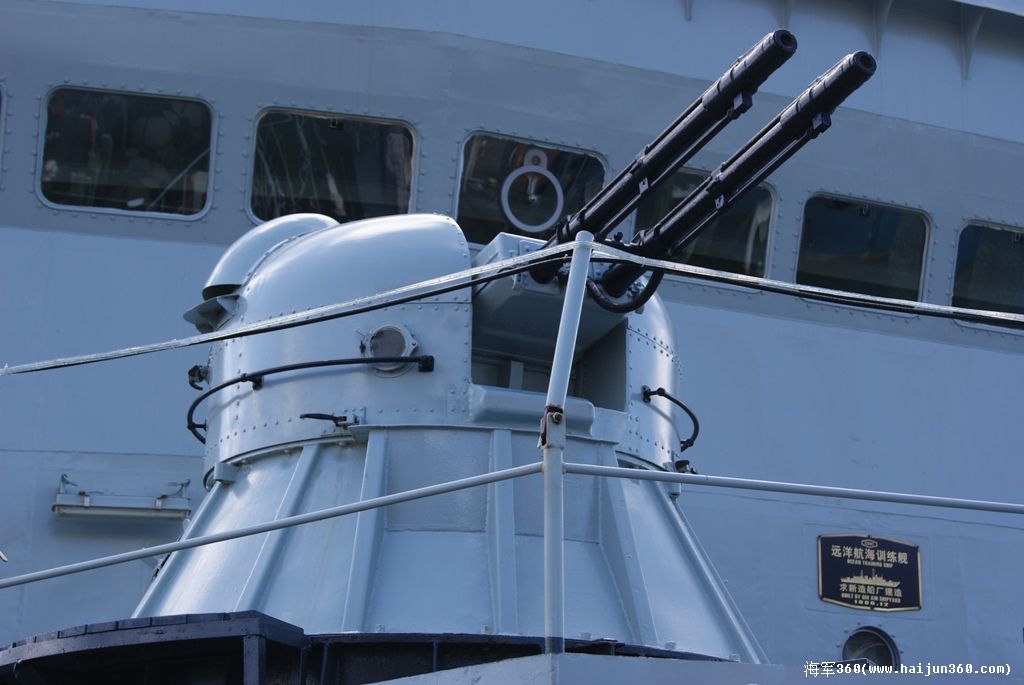- Yes
- No
- Yes! both the 1987 and 2008 iterations of Nanhui!
- Yes! but just the 1987 iteration of Nanhui!
- Yes! but just the 2008 iteration of Nanhui!
- No to all!
many centuries ago in the mythical era of… 2020… this was originally going to be a massive suggestion for the entirety of the Type 037 family of Corvettes and their sometimes confusingly named variants both foreign and domestic… however this is a subject that was even before the uniform ship suggestion rule, simply way, WAY, too large for a single suggestion, so this is going to be a whole series of suggestions eventually across the Chinese and Other sections, to give each class and national variant its own time to shine.
With that said, this is a suggestion for the second of what might become at around a dozen suggestions:
the Type 037I (NATO reporting name: Haijiu-class) Submarine Chaser: No.688, 南匯 (Nanhui)
plus the 1990 and 2000s refits that are subject to too much speculation to be viable will be mentioned.
this subclass is comprised of 3 ships, and a further 4th that is a unique development for another sugestion:
南匯 Nanhui (688) - refitted twice (1990, 2000s), decommissioned in 2013
阮元 Ru’an (694) - never refitted, decommissioned in 1995
安吉 Anji (697) - armament only ever downgraded, decommissioned in 2017
as well as a unique further development (which will be its own suggestion):
永嘉 (Yongjia)(693) - refitted once (1990), still in service - known as the unique Type 037ID
Nanhui at sea, pennant number 688, 2008
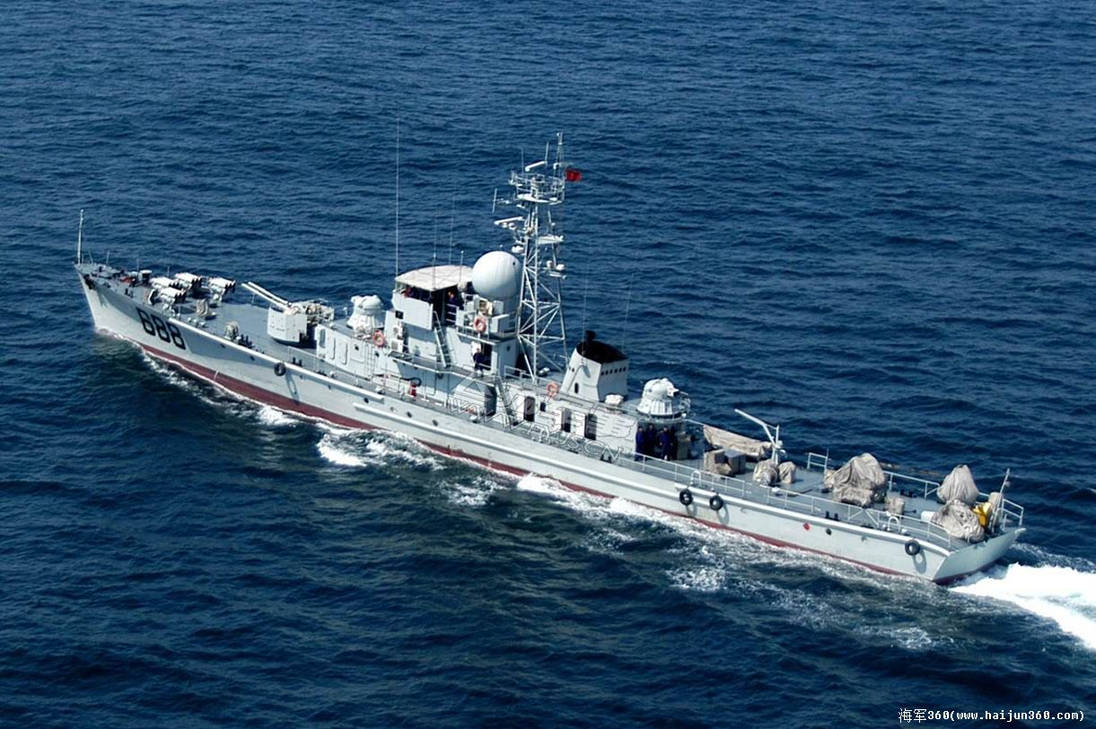
another picture of Nanhui, this time in coastal waters
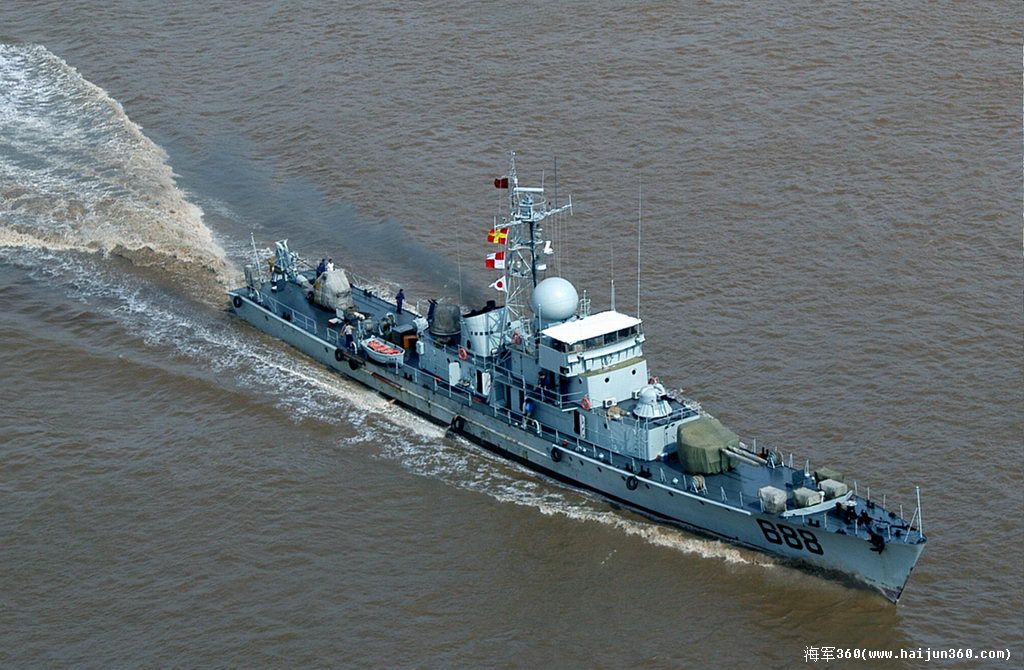
DESIGN:
The Type 037I and subtype ID is the first major modification of the original Type 037 design, acknowledged as such with the NATO reporting name of Haijiu-class, instead of retaining the original Hainan name.
The Type 037I Originated from a 1974 proposal and eventually the 1978 initial development. This development was an effort to improve the somewhat limited maximum range of the Type 037, as being a submarine chaser, it really helps to be able to go far out to sea… like where American submarines prefer to roam… AND then chase submarines at flank speed for more than a couple hours while not worrying about being within “hey we can rig a sail on this tub for the last bit of travel right?” distance from a port.
This key improvement allowed the Type 037I to reliably operate in the increasingly aggressively claimed South China Sea without the range constraints that has always relegated the base model Type 037 to coastal defense and riverine patrol duties.
|
|
one of the most simple but key modifications is that the 037I hull is simply just lengthened by 4 meters; presumably at the amidships; increasing the displacement by around 45 tons, providing space for an extra 30 tons of fuel, while only barely altering the outwards appearance.
the most visually apparent changes are in armament and electronics. the most striking difference from an 037 and 037I, is the large radome on roof of the bridge for the Type 342 (NATO reporting name: Round Ball) long-range air and surface search radar, as well as a significantly upgraded weapons loadout regardless of what time period.
Including or removing weapons, and multiple time periods (1987-1989, 1990s, allegedly 2000s) featuring 1 or 2 of the original Type 66 57mm paired armament, and 1 or 2 of the powerful Type 69 paired 30mm autocannons, the Chinese improvement of the Russian AK-230.
|
|
despite all this, only 3 units of the 037I + the one 037ID were built before the class was replaced in production by the Type 037IS, likely meaning the 037I’s and ID were just a developmental stopgap between the base model 037 and the Type 037IS-class.
HISTORY:
as the Type 037I series became active in 1987, and is from China, a country well known for its commitment to transparency; there’s isn’t much history of note aside from refits.
|
|
the lead ship of the class, Nanhui (688) was somewhat of a testbed, and served from 1987-2013.
Ru’an (694) must’ve had some serious build issues or covered up damage as it was retired in 1995 after only 8 years of service.
and Anji (697) remained fairly static, only occasionally losing armament, and was finally retired in 2017.
GENERAL CHARACTERISTICS:
Displacement (normal):
478 long tons
Displacement (full load):
490 long tons
|
|
Length:
62.8 meters - the 037Is were design-wise just slightly lengthened 037s
Width:
7.2 meters
Draft:
2.24 meters
|
|
Propulsion (1987-circa 2000): four 12VE230ZC diesel engines were retained from the base model Type 037, producing 2200 horsepower each for 8,800 hp (6,562 kW) to power 4 shafts for a top speed of 28 knots (52 km/h; 32 mph) - the extra weight took a couple knots of the ~30 knot top speeds of the base model Type 037
Propulsion (post-Y2K): at some point after the 1995 decommissioning of Ru’an (presumably as of 2000), the remaining Type 037Is in service; Nanhui and Anji; had their powerplants upgraded to the 12VE230ZC-I, producing 2500 horsepower each with a 5% decrease in fuel consumption, for a total output of 10,000 hp through the 4 shafts, for a top speed of 30 knots
|
|
Range: 1750 nautical miles at 18 knots - a large part of the benefit of lengthening the Type 037s allowed for more fuel, necessary for extended patrols in the South China Sea
|
|
Crew: 70-72
ARMAMENT:
the Type 037I has probably the most powerful gun armament loadout of the entire series, and a decent amount of variation for only being 3+1 ships:
main armament remained unchanged from the base Type 037 models:
2×2 57mm L/70 Type 66 guns - locally produced copy of the air cooled ZIF-31 L/70, which is the original, land-based version of the AK-257 AK-257 - Wikipedia
http://www.navweaps.com/Weapons/WNRussian_57mm-81_zif-71.php
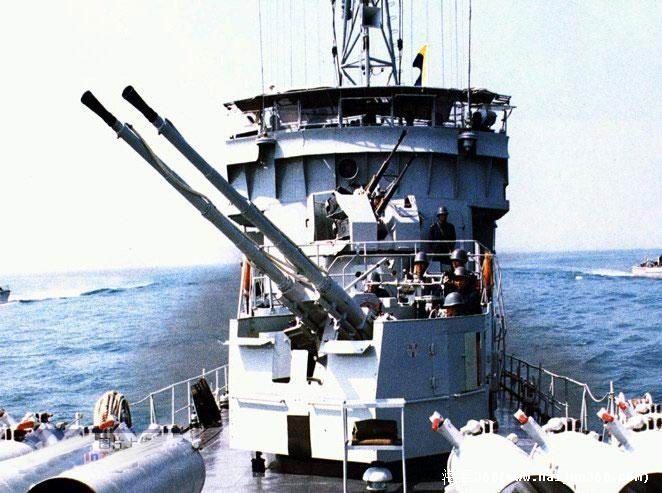
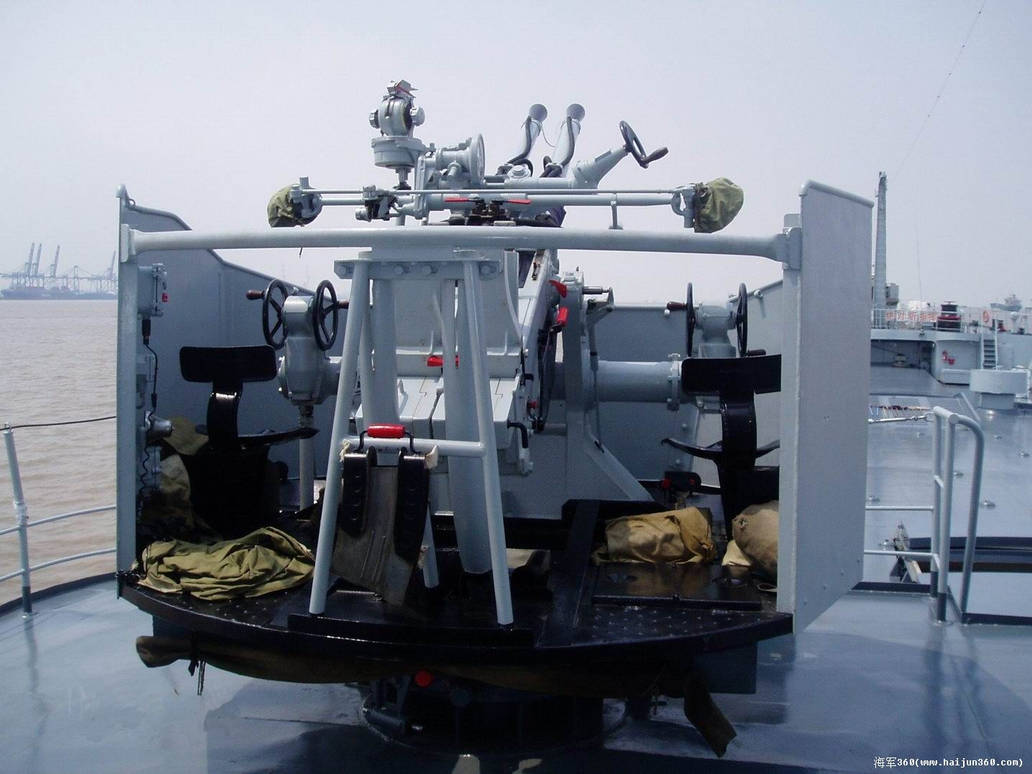
but the secondary guns were… ummm shall we say… slightly… upgraded?
the 25mm Type 61s from the base model Type 037 were switched out for:
these monsters.
2x1 twin 30mm/63 Type 69 rotary autocannons- the Chinese improvement over the Russian AK-230. AK-230 - Wikipedia placed in a superfiring position above and behind the Type 66 turrets, on the superstructure ahead of and behind the Bridge.
The Type 69 has a 50 degree per second horizontal traverse (AK-230 has 35 DpS) and external shell ejection, but only uses the Chinese-produced copy of the 30x210mmB OF-83D HE shell.
additionally, various sources list the fire rate setting of the Type 69 as 2000 RPM, 1000 RPM, and 350-400 RPM.
4x1 250mm RBU-1200 ASRLs - retained from the Type 037
and all right on the bow as seen here

2 × BMB-2 ASW depth charge mortars
BMB-2 in a museum
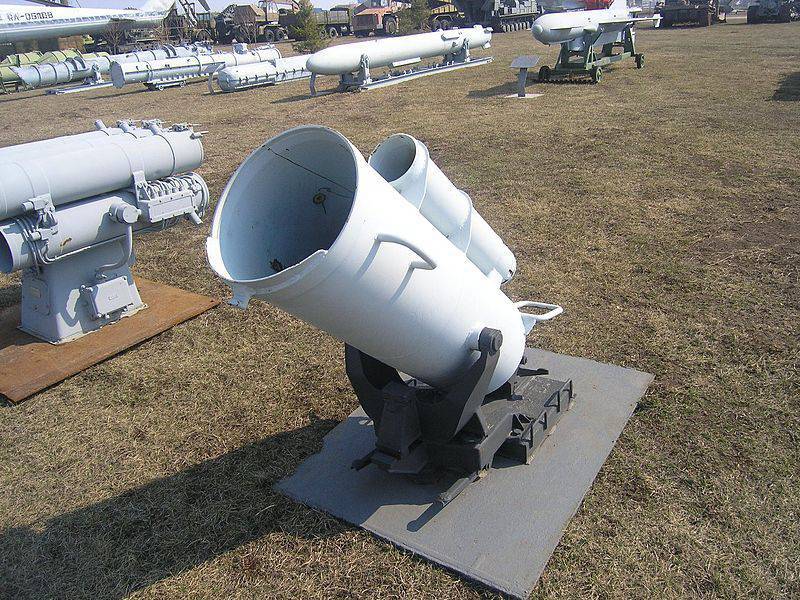
pair of depth charge rails with 10 depth charges per rail - retained from the Type 037
pair of mine launcher rails, 5 mines per rail - retained from the Type 037
Type 351 locally produced copy of the Reya (NATO reporting name: POTHEAD) navigation and surface search radar - retained from the Type 037
H/SJD-3 (mechanically improved Soviet Tamir-11) telescoping high frequency sonar array - retained from the refitted Type 037s.
Type 342 (NATO reporting name: “Round Ball”) radome encapsulated long-range air and surface search, surveillance, and early warning radar array.
in 1990, Nanhui had the aft Type 66 removed, being replaced by a direct copy of the French Thomson-Sintra SS-12/DIP-12 hull mounted Variable Depth Sonar, likely to supplement the limited range H/SJD-3.
SPECULATED:
haijun360 claims that the bow Type 66 turret of Nanhui was replaced with a dual Ying Ji-8 SSM launcher, but there are no pictures to show it.
either way, as the best picture of Nanhui is from 2008, and clearly showing its Type 66 bow turret, either the Ying Ji-8 was just a test fitting, or a short-lived modification with severe flaws, or just unacceptable cost implications- which to be fair IS a recurring issue across the entire Type 037 family.
if there are somehow any pictures from the early 90s floating around showing No.688 Nanhui with an SSM platform, hopefully someone can show it, but that is highly doubtful unless Gaijin or their Chinese researcher(s) can get ahold of it.
SPECULATED:
by the 2000s and concurrent with the engine upgrades, the Nanhui allegedly (navypedia states this but no other source does) would have an additional refit in the 2000s, replacing the bow Type 69 with 2 pairs of 14.5mm KPVs in a way that matches the followup Type 037IS and its cost-cutting efforts.
this is what that setup looks like

2×1 57mm L/70 Type 66 guns - only on the bow
2x1 twin 30mm/63 Type 69 rotary autocannons - unchanged from 1987 or reverted from early 2000s
4x1 250mm RBU-1200 ASRLs - unchanged from 1987
2 × BMB-2 ASW depth charge mortars - unchanged from 1987
pair of depth charge rails with 10 depth charges per rail - unchanged from 1987
pair of mine launcher rails, 5 mines per rail - unchanged from 1987
Sensor Suite:
Thomson-Sintra SS-12/DIP-12 hull mounted Variable Depth Sonar
Type 351 locally produced copy of the Reya (NATO reporting name: POTHEAD) navigation and surface search radar - retained from the Type 037
H/SJD-3 (mechanically improved Soviet Tamir-11) telescoping high frequency sonar array - retained from the refitted Type 037s.
Type 342 (NATO reporting name: “Round Ball”) radome encapsulated long-range air and surface search, surveillance, and early warning radar array.
SOURCES:
online:
https://zh.wikipedia.org/wiki/037型反潜护卫艇#037IS型反潜护卫艇
http://www.navypedia.org/ships/china/ch_cf_688.htm
海上轻骑兵—中国海军037系列猎潜艇_网易新闻 - many picture links are dead :(
The evolution of the 037 - the Chinese 037I late anti-submarine frigate - Zhihu
literary:
Conways All the Worlds Ships 1947-1995, PDF/DjVu page 73
